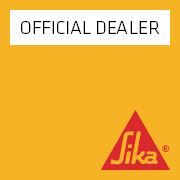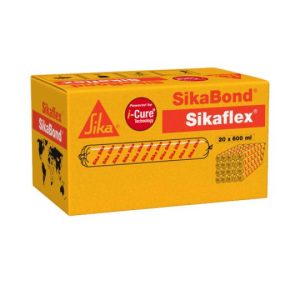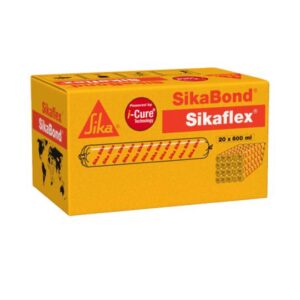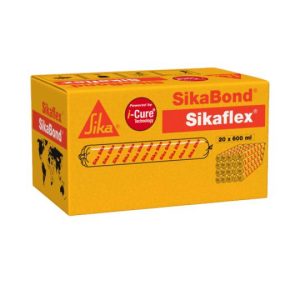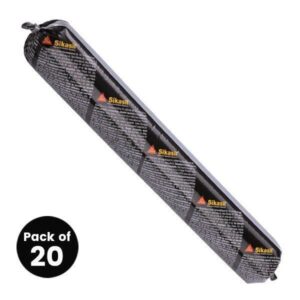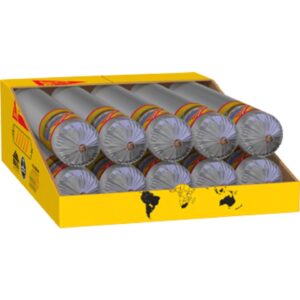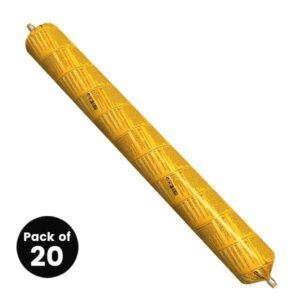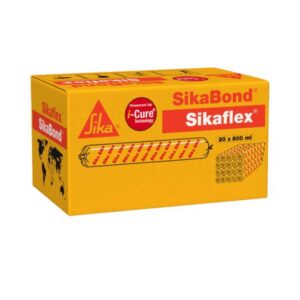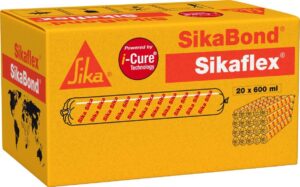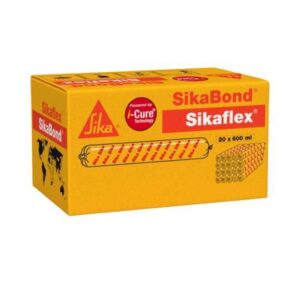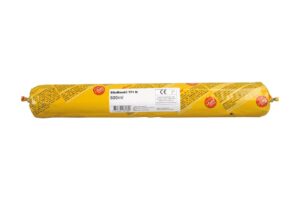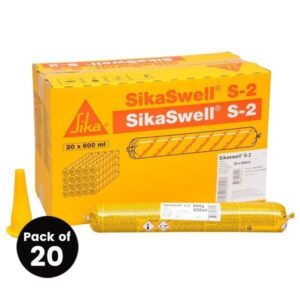What is a sealant (in building)?
Sealants are the material used to bond an opening in a structure, effectively weather proofing a building by preventing dust, moisture, heat and air from passing through the structure’s joints. In building construction, a sealant is the material which provides the necessary adhesion to form a seal.
Sealants are very similar to adhesives in function, with the main difference between the two being that sealants usually have higher elongation and lower strength than adhesives. The main purpose of sealants, as the name suggests, is to seal joints and assemblies together. They provide adhesion, elongation and flexibility, depending on the materials they are bonded to and the environmental conditions. To achieve that, sealants are usually formulated with an elastomer and have a paste-like consistency to fill in substrate gaps.
Based on their strengths, sealants fall between caulks and adhesives. While not as strong as adhesives, sealants serve some key purposes – not only do they seal substrates together, but also help keep moisture inside or out of the materials they are used on. What’s more, sealants, such as the Sikaflex PRO-3, are great for providing sound and thermal insulating, and serve some insulation to fire.
What are the types of bonding adhesives and sealants?
Based on their physical form, sealants can fall into one of three main types: one-component sealants, two-component sealants and sealant tapes. One-component sealants come packaged in a cartridge, and don’t require special equipment to apply. Two-component sealants, on the other hand, are composed of a base and an activator, which need to be mixed together with special equipment before application. This type of sealant also requires a bulk gun to apply. Similarly to PSA tape, sealant tapes come supplied in flexible packaging.
Another way to classify sealants is based on their chemical make-up and strength. There are seven basic types of sealants and their suitability for a project depends on the properties of both the substrates and the sealant, as well as the cost.
The most commonly used types of sealants are silicone and latex sealants. Silicone sealants are used across a number of different building applications due to their high performing features, such as temperature and UV resistance, continued flexibility, generally longer service life and the highest movement capability. Silicon sealants are suitable for both indoor and outdoor use.
Latex sealants, on the other hand, are one of the most workable sealant types – they are water-based, paintable and easy for both application and clean up. They are also suitable for exterior use and significantly cheaper compared to other sealant alternatives.
Other types of sealants include polysulfide sealant, acrylic sealant, polyurethane sealant, butyl sealant and ‘hybrid’ sealants (the latter also known as MS polymers). As is the case with most materials used in construction, the type most suitable for your project depends on the application, the substrates involved and your budget.
What are the uses of bonding sealants?
High quality sealants are easier to work with and provide longevity and flexibility to the bonds they are used to form. Choosing a good sealant would lessens the need for reapplication and improve moisture and corrosion resistance. Sealants can serve both to form a joint, in a similar manner to a filler, and to prime a surface before decorating it.
Sealants can be used to bond dissimilar material joints, such as concrete to wood and metal to masonry, as well as similar materials (e.g. metal to metal). They are often used to repair larger cracks, seal joints in exterior walls, and fill in gaps on the perimeter of fixed window frames and doors. Sealants are also very handy for concealed masonry-to-floor joints and joints between concrete façade panels.
What are the benefits of bonding adhesives and sealants?
The advantages of using sealants are numerous – they improve the durability and reliability of products, enhance product aesthetics and reduce the manufacturing costs. What’s more, sealants will increase the flexibility of the joints they’re used on and provide weathering resistance, meaning they are ultimately improving the product quality and performance.
One of the key benefits when it comes to the use of adhesives and sealants is the fact that, as a bonding technology, they are incredibly versatile and can be used to create long-lasting seals between almost any combination of materials.
What’s more, since the use of sealants requires minimal heat input, the substrates won’t sustain any damage, meaning the materials being sealed together will maintain their properties. This in turn allows for the employment of new construction methods in product manufacture.
In the context of industrial production, using sealants can save time and therefore money by accelerating the production process. This type of material bonding allows for the introduction of additional properties via the actual seal, and since sealants can serve as an insulator, it also prevents the contact corrosion likely to occur with metal bonds if screws or rivets are used.

